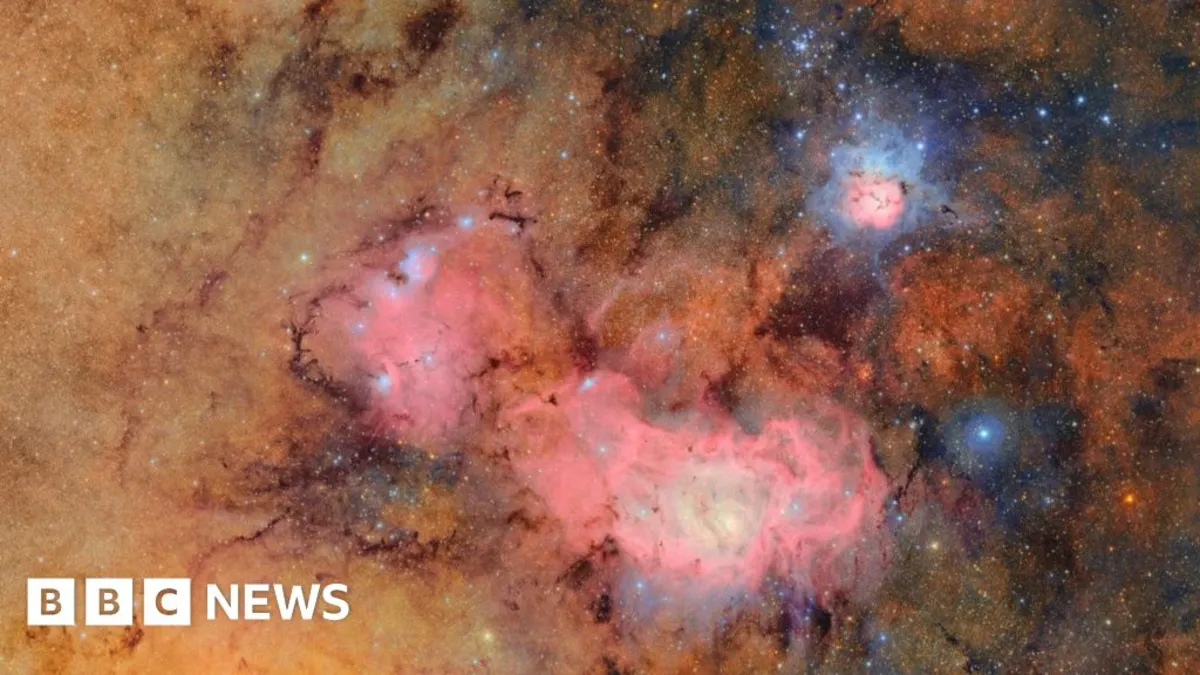
A powerful new telescope located in Chile has recently released its first stunning images, showcasing its unprecedented ability to delve into the dark depths of the universe. This remarkable feat comes from the Vera C. Rubin Observatory, which is home to the world's most advanced digital camera. The initial images reveal vast, colorful gas and dust clouds swirling in a star-forming region approximately 9,000 light-years from Earth, marking a significant leap forward in astronomical research.
The Vera C. Rubin Observatory is poised to transform our understanding of the cosmos. Scientists believe that if a ninth planet exists within our solar system, this telescope could potentially discover it within its first year of operation. Additionally, it is expected to detect hazardous asteroids that may pose a threat to Earth and provide a comprehensive mapping of the Milky Way galaxy. Most notably, this powerful telescope will help answer fundamental questions regarding dark matter, the mysterious substance that constitutes a significant portion of the universe.
This groundbreaking initiative represents a once-in-a-generation opportunity for astronomers, initiating a continuous ten-year survey of the southern night sky. Professor Catherine Heymans, the Astronomer Royal for Scotland, reflects on the long journey to this moment, stating, "I personally have been working towards this point for about 25 years." The UK plays a crucial role in this project, hosting data centers that will process the extremely detailed snapshots captured by the telescope as it sweeps across the sky.
The Vera C. Rubin Observatory is strategically located on Cerro Pachón, a mountain in the Chilean Andes renowned for its ideal conditions for space research. This area is characterized by its high elevation, arid atmosphere, and minimal light pollution, making it perfect for stargazing. Preserving this darkness is vital; hence, even the bus rides along the winding roads at night must be conducted with caution, avoiding full-beam headlights. Inside the observatory, an engineering unit is dedicated to maintaining the dark environment essential for capturing astronomical light, ensuring that even stray lights are turned off.
One of the observatory's primary goals is to understand the history of the universe, which involves observing faint galaxies or supernova explosions that occurred billions of years ago. Achieving such clarity requires sharp images, as explained by commissioning scientist Elana Urbach. The observatory's unique three-mirror design plays a crucial role in this process. Light from the night sky enters the telescope, reflects off the primary mirror (8.4 meters in diameter), bounces onto a secondary mirror (3.4 meters), and finally reaches a third mirror (4.8 meters) before entering the camera.
The camera within the telescope is a technological marvel, measuring 1.65 meters by 3 meters and weighing 2,800 kilograms. It boasts a wide field of view and captures images approximately every 40 seconds for about 8 to 12 hours each night. This continuous operation enables the telescope to conduct a Legacy Survey of Space and Time over the next decade. With 3,200 megapixels—67 times more than a typical iPhone 16 Pro camera—its high-resolution capabilities allow it to detect incredibly faint objects, such as a golf ball on the Moon, requiring 400 Ultra HD TV screens to display a single image.
As the telescope begins its operation, hundreds of scientists worldwide will be tasked with analyzing the vast stream of data it generates, peaking at around 10 million alerts per night. The survey will focus on four key areas: mapping changes in the skies, studying the formation of the Milky Way, mapping the Solar System, and investigating dark matter. The observatory's unique ability to continuously survey the same areas will allow it to detect changes over time, potentially revealing phenomena that have yet to be discovered.
The Vera C. Rubin Observatory will also play a crucial role in planetary defense by detecting dangerous objects, such as asteroids that may venture close to Earth. The camera's large mirrors will enable scientists to identify the faintest light and distortions emitted by these celestial objects, allowing for accurate tracking as they move through space. Professor Alis Deason from Durham University emphasizes the transformative potential of this data, stating, "It's going to be the largest dataset we've ever had to examine our galaxy."
Professor Deason anticipates that the Vera C. Rubin Observatory will extend our ability to observe stars within the Milky Way to distances of up to 1.2 million light-years, far beyond the current limit of 163,000 light-years. This enhanced perspective may provide insights into the galaxy's stellar halo and the faint satellite galaxies that have survived over time.
Excitingly, the Vera C. Rubin Observatory is believed to possess the power to finally uncover the long-sought Planet Nine, a hypothetical planet that could reside up to 700 times farther from the Sun than Earth. This groundbreaking discovery could reshape our understanding of the solar system. As Professor Heymans aptly puts it, "It's going to take us a long time to really understand how this new beautiful observatory works. But I am so ready for it."